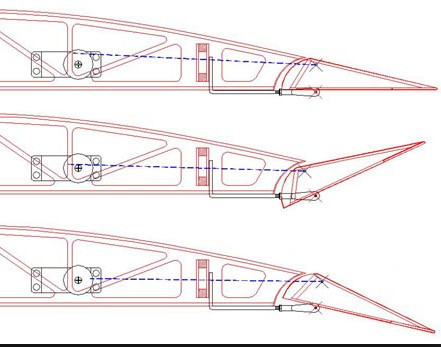“Ailerons on a wing are designed to give extra lift on that wing to make the plane roll”
Taken from a book written by a professional pilot with thousands of hours. Any one care to comment?
The only comment I can give is pilots are usually not engineers. Hence, unless the pilot-writer is also an engineer, or a test pilot, get another book, or you will read tons of half cooked, ill formulated “truths” like that. What is really irritating is that exams seems to be a magnet for such formulations.
The statement is correct, though.
Half correct. Or some other fraction for differential ailerons.
The statement is only partly correct as stated.
Normal ailerons can move into the air stream above the wing or the air stream below the wing. The latter increases lift and the former reduces lift, on that wing.

This makes them much more effective than if they worked only in the one direction. Some airliners have ones which do that but they aren’t called ailerons.
It’s the old question: If I hold my hand out of the window, and turn it 45° so that the air gets deflected downwards, the hand wants to move up. So, there is a force vector downwards and a countervector upward. Now, is that because the hand creates lift, or is it repulsion ?
The wing of an aerobatic plane that doesn’t have any aerodynamic profile. Does that really create lift, or is it being propelled because of the air deflected downward ?
It’s because the airflow is being deflected 
One can make it more complicated (and bring in Bernoulli etc who produced some helpful equations for gas flow, along with others e.g. Navier–Stokes, and one always tries to arrange it so that the flow remains clean, with minimal drag) but that’s the most basic physics. Absolutely nothing, zero, zilch, nowt whatsoever is ever going to happen in terms of “lift” unless the airflow is deflected in another direction.
Peter I am trying to get more threads for you and one hopes they generate some interest. In this particular case the book is written by a fast jet pilot where he is trying to explain “aerodynamics” to the general readership.
If nothing else is changed than a downgoing aileron increases the camber ( https://en.wikipedia.org/wiki/Camber_(aerodynamics) ) of a portion of the wing. Thereby both the coefficient of lift and the angle of incidence are increased resulting in more lift. The opposite happens on the downgoing aileron. Whether the combined effect of the two ailerons affects the total lift of the aircraft depends on the type of aileron. But what do I know, I am only a slow jet pilot 
Ok, for the slow and fast jet pilots, this is my question.
The Bernoulli principle says a profiled wing produces lift – because on the upper side of the wing, the air travels longer and therefore faster, which creates a pressure differential between lower and upper side of the wing, eventually resulting in an upward lift force. We all learned and understood that. That is, if wings are cambered.
My example with the hand, though, doesn’t work with Bernoulli. It works on the downward deflection of air which creates a force vector upward. My hand has a flat surface, Bernoulli doesn’t stand a chance, because both sides of the hand are essentially identical and the air travels equally fast on both sides. You can also use a piece of flat wood, or something like that. I just deflect the air downward, and that creates a thrust which must be compensated (action = reaction) by my hand moving up or me holding the hand level which consumes energy. At the same time the hand creates upward thrust, it also creates drag, just as the aerobatic wing produces drag.
An aileron, in my book, works in two ways: it increases the camber, but it also deflects the air downward. A flap, for that matter, does the same: it increases lift (through Bernoulli and the camber), but it also deflects air downward. There must be two components of force, clearly.